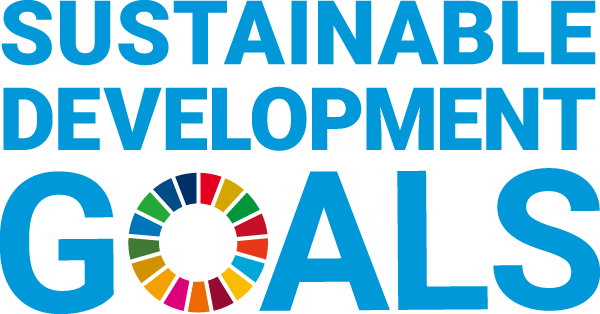Sustainability Management (Materiality and SDGs)
System of Sustainability Management
Our group has identified 15 material topics that are material to sustainability management and divided them into four pillars: "Fostering trust with stakeholders," "Solving social and customer issues through products," "Minimizing environmental load," and "Respecting human resources and their active participation."
Materiality related initiatives are pursued by defining the ideal state and KPIs. Material issues are discussed individually at weekly Corporate Strategy Committee meetings as required, deliberated by Sustainability Promotion Committee, and particularly important issues are discussed by the Board of Directors.Progress is reported in our annual Sustainability Data Book and on our website. Among the material topics, the most important is "mitigation of and adaptation to climate change," and the entire Group is addressing this with the long-term goals of PACIFIC Environmental Challenge 2050. Regarding one of the themes covering four material topics, "respecting human resources and their active participation," five material topics are all related to our human resources strategy, which is linked to our PURPOSE, and our human resources strategy is developed through discussions that include board members.
Materiality and SDGs
Materiality about Sustainability
In 2019, the Pacific Industrial Group renovated our long-term vision into “PACIFIC GLOCAL VISION” as our future vision, and formulated our brand slogan. In order to realize our corporate values and vision, we have identified the Pacific Industrial Group’s important issues (materialities) regarding sustainability with 2030 as a benchmark.
Going forward, we will integrate these materialities into our business endeavors, and incorporate them into specific activities as sustainability management initiatives. In this way, we will refine our competitiveness as a glocal company, work on achieving SDGs on a company-wide basis, and enhance our existence value for the future.

1. Fostering trust with stakeholders
- Corporate ethics and compliance
- Responsible procurement
- Improvement in customer satisfaction
- Local community development
- Particularly relevant SDGs
-
2. Solving social and customer issues through products
- Contribution to a sustainable mobility society and prosperous living
- Improving mobility safety
- Development of environment-conscious products
- Particularly relevant SDGs
-
3. Minimizing environmental load
- Mitigation of and adaptation to climate change
- Sustainable resources use
- Conservation of water resources
- Particularly relevant SDGs
-
4. Respecting human resources and their active participation
- Respect for human rights
- Stable employment and decent work environment
- The safety and health of employees
- Development of human resources and cultivation of culture that we can tackle new endeavors
- Diversity and inclusion
- Particularly relevant SDGs
-
Identification process
1. Setting prerequisites
After clarifying the conditions for materiality, we extract items from global standards related to sustainability, such as ISO26000 and GRI, and sort them into items that we believe are appropriate based on our business processes.
Prerequisites
- Themes related to Sustainability
- Ten years until 2030 in mind
- Consider importance including on a global basis
2. Importance Analysis
Analyze the importance of items identified in step one, both from the standpoint of the Pacific Industrial Group and from its stakeholders, and create a materiality matrix to be used for discussion.
Importance for the Pacific Industrial Group
Values, financial opportunities and risks, and megatrends that we want to embrace based on our long-term vision, Prerequisites mid-term management plan, and CSR policies.
Importance for stakeholders
Expectations and impacts from stakeholders, key international initiatives, etc. (UNGC*, OECD, SDGs, SASB*), and requirements from major rating agencies (CDP*, Development Bank of Japan, FTSE, EcoVadis, etc.)
- UNGC: United Nations Global Compact, SASB: Sustainability Accounting Standards Board
- CDP: Carbon Disclosure Project
3. Discussions and Review
Discussion and Review of materiality based on materiality items of domestic and overseas car manufacturers and automotive parts manufacturers, as well as the future direction of technological development and the impact of the COVID-19.
Main revision points
Consider the importance of “the safety and health of employees” “stable employment and decent work environment.” And “environment-conscious products.”
4. Expert Review
We have identified materiality related to sustainability. Accordingly, we asked a team of the Development Bank of Japan, which has a proven track record in advising ESG investment and corporate materiality, to evaluate the materiality formulation process and challenges. In particular, we were given advice from the perspective of long-term investors who have a strong need for information on sustainability, including ESG investment. We will make the best use of their opinions in our sustainability management in the future.
I hope you will leverage this wealth of information to build and evolve a framework that conveys your uniqueness.
The time axis until 2030 seems to be short, but the positioning of materiality in sustainability management is clear and appropriate. It is the identification process that is noteworthy. It is the identification process that elaborately incorporates a variety of factors, including social issues, SDGs, and the impact of COVID-19. Therefore, it is desirable to disclose them in detail.
Looking ahead, we hope to draw on the wealth of information organized in the identification process to build and evolve frameworks so as to convey your uniqueness. From the viewpoint of materiality with institutional investors in mind, the theme of “solving social and customer issues through products” is the most important “aggressive” materiality in discussing your growth strategy with social issues. In light of the impact of COVID-19 and the social importance of your company, which has products with a high market share both domestically and overseas, from the viewpoint of business continuity, I think that information on “response to natural disasters (BCM/BCP)” and “responsible procurement” is important. In addition, I would recommend gathering opinions of employees of the Schrader Group, which have become subsidiaries, and other overseas bases, and paying more attention to overseas stakeholders.

Executive Officer
(At that time)
Development Bank of Japan, Inc.
5. Approval and Decision
Final approval is given by the Board of Directors following discussions at the Corporate Strategy Committee.
Briefings on materiality are provided for section managers and above in each division, with objectives shared. In the future, we will promote thorough dissemination in-house, establish KPIs, and carry out PDCA.